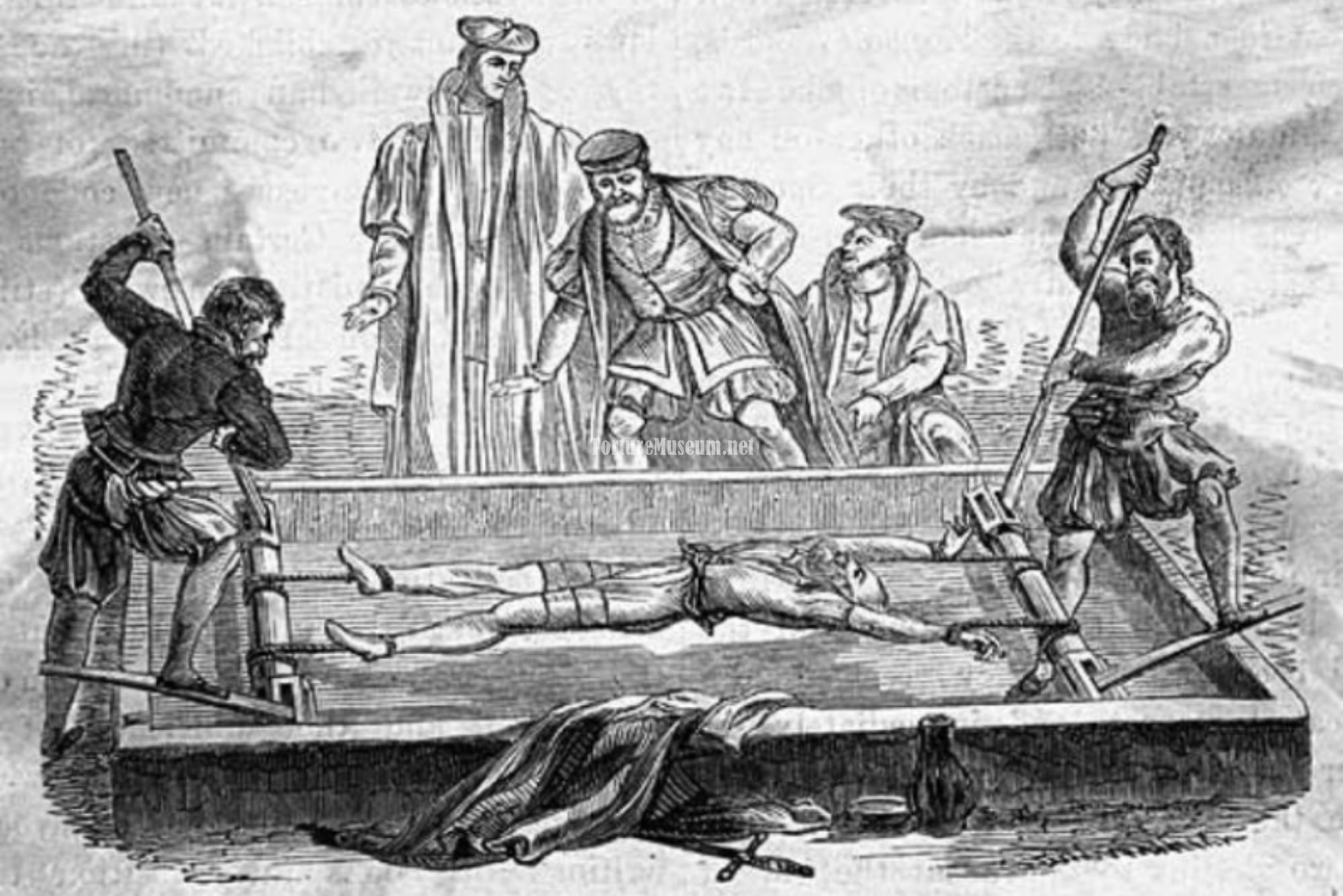Unmasking Medieval Agony: The Torture Rack
Step into the chilling world of medieval torture and uncover the sinister secrets of the torture rack, a device engineered to shatter bodies and souls. Prepare to delve into the darkest corners of history and witness the incredible resilience of the human spirit facing unimaginable suffering.
Imagine a time when justice was brutal, and punishment meant inflicting unimaginable pain. The torture rack, a chilling symbol of medieval cruelty, embodies this dark period. More than just a tool for inflicting pain, this instrument aimed to break a person’s body and spirit.
Picture a sturdy wooden frame, resembling a heavy bed. The unfortunate soul was strapped down, ankles secured to one end, wrists to the other. Then, the true horror began. With each agonizing turn of a lever, the torturer slowly stretched the victim’s body.
Muscles were stretched beyond their limits, ligaments likely tore, and bones probably cracked under the strain. Some experts believe extreme cases involved dislocated vertebrae, possibly even severing the spinal cord. Imagine the agony shooting through your body as nerves were pinched, compressed, and stretched. It’s no surprise many victims suffered paralysis or lost control of their bodily functions. Even if they survived, they likely carried physical and emotional scars for life.
The Mechanics of Agony: How the Rack Inflicted its Torture
The rack wasn’t a mere medieval invention. Evidence suggests its use as far back as ancient Greece. However, it reached its terrifying peak during the Middle Ages, a time when confessions were paramount, often extracted regardless of guilt. The rack became a favored tool to achieve this, its presence instilling terror long before the torture began.
Consider Anne Askew, an English Protestant who challenged the Church’s teachings. In 1546, she endured the rack’s cruelty. Another victim, Catholic priest Nicholas Owen, refused to betray his faith. His punishment in 1606? The rack. These are but two examples among countless others. Their stories, passed down through history, provide a chilling glimpse into the physical and psychological torment inflicted by this brutal device.
What’s truly disturbing is that even after enduring the excruciating physical pain, the torture wasn’t over. Imagine the terror of anticipating the next turn of the lever, the feeling of utter helplessness. These psychological scars often ran deeper and lasted longer than any physical wound.
The Hopkinsville Goblins, the Hindenburg disaster, and the legend of Johnny Appleseed all offer captivating glimpses into different aspects of history, but the torture rack stands as a chilling symbol of humanity’s capacity for cruelty.
Beyond Broken Bones: The Devastating Effects of the Rack
The rack wasn’t just about inflicting pain; it was a system designed to cause lasting suffering. Imagine your joints being pulled in opposite directions, stretching far beyond their normal range of motion. This could lead to dislocations of shoulders, hips, knees – any joint subjected to the strain. It was the kind of injury that could leave a person permanently crippled, a constant reminder of the torment they endured.
But it wasn’t just the joints. The rack wreaked havoc on muscles and ligaments. Imagine those vital tissues, responsible for your body’s movement, being stretched and strained until they tore. The pain must have been agonizing, turning even simple movements into a torturous experience. Even if the muscles didn’t tear completely, the damage could be so severe that a person would be left incredibly weak, unable to perform basic tasks.
In the most extreme cases, the rack’s force could fracture bones. Imagine the sickening crunch as bones, the framework of your body, shattered under the pressure. The pain would have been unimaginable, and the injuries potentially life-altering.
What’s even more disturbing is that the damage wasn’t always visible. The extreme stretching could also inflict serious internal injuries. The rack could cause organs to rupture, leading to internal bleeding and organ failure, adding another layer of horror to this already gruesome device.
The Enduring Legacy: When and Why the Rack’s Reign Ended
The rack, a chilling symbol of medieval brutality, evokes questions about its decline. When did this horrific practice finally end? The answer, unfortunately, isn’t a simple one.
Unlike a sudden decree outlawing its use, the disappearance of the rack was a gradual process, influenced by several factors. The evolution of legal systems played a significant role. As societies progressed, the emphasis shifted toward more humane forms of punishment and gathering evidence. The rack, a tool designed to extract confessions through excruciating pain, no longer aligned with these evolving legal principles.
Simultaneously, social values underwent a transformation. The Enlightenment, a powerful intellectual and cultural movement, swept through Europe, emphasizing reason, individual rights, and human dignity. This shift in societal values cast a harsh light on torture practices, leading to growing opposition and demands for reform.
It’s important to note that the decline wasn’t uniform across the globe. While some regions may have abandoned the rack earlier, others clung to its brutal use for extended periods. Historical records indicate that the rack persisted into the 18th and even 19th centuries in certain parts of Europe, a chilling reminder that the progress of human rights is not always linear.
The rack’s story, though deeply unsettling, serves as a stark reminder of the importance of human rights and the need for constant vigilance against cruelty in all its forms. While its reign of terror has ended, its legacy endures, prompting us to reflect on the progress made and the work still to be done in upholding human dignity.
- Revolution Space: Disruptive Ion Propulsion Transforming Satellites - April 24, 2025
- Race Through Space: Fun Family Game for Kids - April 24, 2025
- Unlocking the Universe: reading about stars 6th grade Guide - April 24, 2025
















